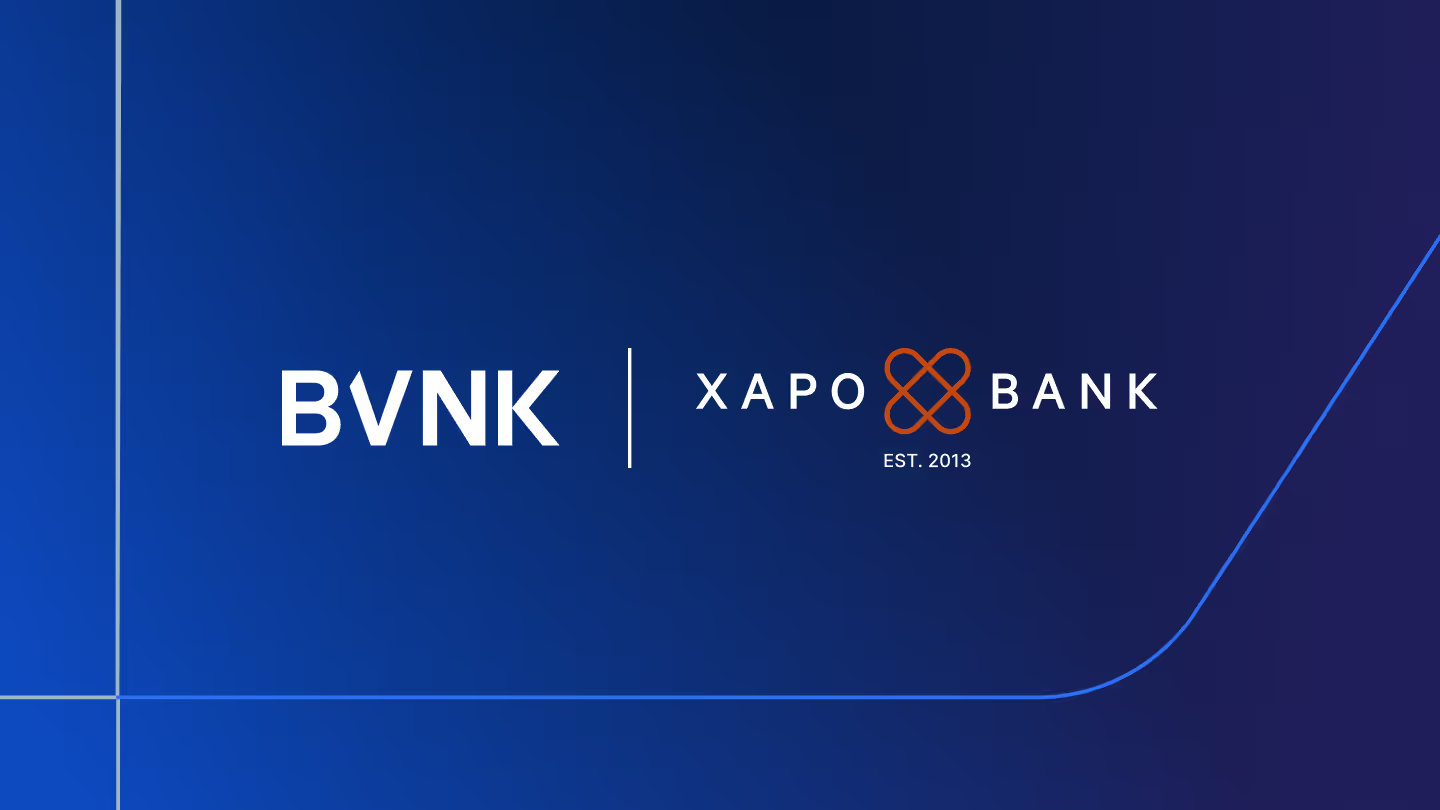Ebury’s Enrique Colin: the DLT opportunity for fintechs in 2023
We spoke to fintech product leader Enrique Colin about customer demand for stablecoins and embedding DLT payments with BVNK.
.avif)
Enrique Colin is SVP of Data and Product at Ebury, one of Europe's largest fintechs. Since joining the business a decade ago, he has supported the company's global growth from 50 to 1300 employees, more than £150 million in revenue and $21 billion transactions a year.
In 2022, he moved into the world of crypto, leading the analytics function at market maker GSR before returning to Ebury this year to deliver on a vision of multi-rail payments.
We spoke to Enrique about how distributed ledger technology (DLT) can help fintechs like Ebury develop their payments products and meet customer demand.
Tell us about your role.
I joined Ebury early on and spent eight building the data function from scratch. Our team became pretty material to what we do at Ebury – from using data science for pricing and building credit risk to reconciliation reporting.
Over that time, we've expanded across 30 jurisdictions and in 2020, Santander bought 51% of the business.
How did you discover DLT?
I’ve been involved with crypto since the launch of the Ethereum ecosystem back in 2015 and more heavily since the DeFi summer of 2020.
I was frustrated with the challenges we had in traditional finance, and after seeing the protocols that were being built around automated market makers, yield farming, peer-to-peer loans and so on, I decided to jump. What better place to go than the leading market maker in this space?
It was a fun, turbulent year. The timing was a bit laughable, but I enjoyed the experience. After a while though, I felt a bit disconnected from the problem space and wanted to be closer to the customer. That’s when I returned to Ebury to head up the product team.
What do you see as the biggest problems in cross-border payments right now?
It comes down to a clear mismatch between our expectations on how payments should work internationally, when it comes to speed, certainty and cost, and how they actually work.
At Ebury, we look to do well what banks do poorly. So we’re looking to embrace this kind of complexity. For example, we deal with complex corporate group structures with multiple subsidiaries, complex cash reconciliation issues and running payroll across multiple jurisdictions.
How are you thinking about DLT at Ebury?
We’re interested in use cases and applications that are fintech on the front, powered by DLT on the back, but the complexity is being abstracted away for our clients. More specifically, we’re looking at using USDC rails for cross-border payments in some corridors.
We're seeing this already happening in the market for remittances, but on B2B payment flows where Ebury is focused, we now have clients that are coming to us with those needs. So that’s the short term.
In the long term we're monitoring some very interesting trends. As more private stablecoin issuers issue tokenised currencies like USDC, EUROC, tokenised BRL, we’re starting to see development of on-chain FX markets. If you go to Uniswap right now, you can quote EUROC, USDC, and it's quite competitive – there's actually some depth there.
So what does this mean from an FX standpoint? What does the future look like when you're looking at 24/7 liquidity, atomic settlement through these rails? That's something super interesting to us. It’s long into the future, but it's something we’re closely watching.
This interview took place at Currency LDN 2023. Register for free to access the talk in full and other on-demand videos.
Tell us more about the demand from customers for DLT. How are you responding?
We have a case right now in continental Europe of a fishing company. They're selling fish worldwide, including across Africa. Finding that right hand side liquidity in some jurisdictions and repatriating the proceeds from those sales is a challenge for them.
At the moment, they're using USDC stablecoins and off-ramping through centralised crypto exchanges.
Now if you think about the wallets that Ebury provides to our merchants, we're basically wrapping together different payment rails and linking them to a corporate identity. Now we’re thinking about how to embed some of these new DLT rails into our wallet, and provide that experience where our clients see a USDC balance just like they see any other fiat currency.
What are the challenges of working with DLT and how are you dealing with those?
The fact that there isn't a clear regulatory framework across jurisdictions makes it difficult for us to be first movers in this space.
There's also a reputation challenge that comes with working with cryptocurrencies. We're heavily regulated across multiple jurisdictions and we have many banking relationships that are very important to us, so not having that clarity or regulatory framework is difficult.
It comes down to going deep into the detail, understanding the nuances of the regulation in every jurisdiction and having a proper compliance framework that we can share with our liquidity providers and our partners.
To the extent that we can externalise some of that complexity, we will seriously consider it – and that's where our collaboration with BVNK started.
How do you think about the risks?
One interesting point is how these technologies bring new ways of proving identity or source of funds. In the future, I don't think we'll be applying all the same AML techniques and processes when we're operating on shared ledgers.
I saw a tweet over the weekend – someone, under a pseudonym, had mapped out how Lazarus Group, the North Korean hacking group, exploited 41,000 ETH.
They showed the whole flow of funds and how they was being dispersed through three or four centralised changes, which actually made the exchanges freeze those accounts. It shows that operating on these rails requires a new way of thinking about AML.
Any advice for fintech product leaders looking to build on top of DLT?
Start with compliance. Business is often a trade-off between infrastructure, capital and regulation. So if you need to start somewhere, I would start with regulation and thinking how you're making that a moat and a competitive advantage for your business.
Register for free to access the interview with Enrique Colin in full, and other on-demand videos from Currency LDN 2023.
Latest news
View allGet payment insights straight to your inbox



.jpg)






.avif)


.jpg)





